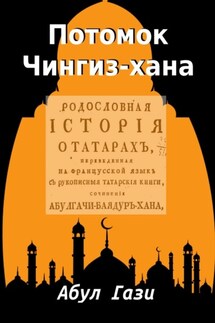Indo-European ornamental complexes and their analogs in the cultures of Eurasia - страница 15
It could be assumed that all these ornamental motifs came from Byzantium into facial embroidery, which adorns religious objects associated with Christian rituals and from it to peasant embroidery and weaving. But there are no such compositions in the Byzantine tradition, which is clearly evidenced by the samples of ornaments published by V.V. Stasov in the album “Slavic and Oriental Ornament Based on the Manuscripts of Ancient and Modern Times”. And at the same time, in medieval psalters, gospels, books of hours, etc. Russia, Armenia, Serbia, Croatia, many elements of Andronovo and Koban decor is constantly present, and, in particular, such characteristic motifs as swastikas of various configurations, jibs, meanders, triangles. They are found to this day in folk ornamentation in the North and Central Caucasus, on the western coast of the Caspian Sea, in Armenia and Azerbaijan.
In practice, the spread of the Andronovo circle ornaments is one of the most important indicators of the ways of promoting the agricultural and cattle breeding tribes of Eastern Europe in the Bronze Age and the Early Iron Age. So M. N. Pogrebova notes that white-encrusted ceramics, the striking similarity of which with the cut ornament of the Andronov culture has been repeatedly drawn by researchers, appears in the Eastern Transcaucasia in the second half of the 2nd millennium BC “in its current form with very rich and varied motives. She believes that in the addition of the Iranian material culture itself, newcomers from the steppes and forest-steppes of Eastern Europe played, apparently a significant role, as evidenced by archaeological sites of the early 1st millennium BC and, in particular, ceramics from Iran showing Andronovo influence, decorated with triangles and meanders, the meander being the leading ornamental motif (Tables 2, 3).
In practice, the spread of the Andronovo circle ornaments is one of the most important indicators of the ways of promoting the agricultural and cattle breeding tribes of Eastern Europe in the Bronze Age and the Early Iron Age. So M. N. Pogrebova notes that white-encrusted ceramics, the striking similarity of which with the cut ornament of the Andronov culture has been repeatedly drawn by researchers, appears in the Eastern Transcaucasia in the second half of the 2nd millennium BC “in its current form with very rich and varied motives. She believes that in the addition of the Iranian material culture itself, newcomers from the steppes and forest-steppes of Eastern Europe played, apparently a significant role, as evidenced by archaeological sites of the early 1st millennium BC and, in particular, ceramics from Iran showing Andronovo influence, decorated with triangles and meanders, the meander being the leading ornamental motif (Tables 2, 3).
A similar picture can be traced in the ornamentation of Central Asia in the late 2nd – early 1st millennium BC. M.A. Itina, on the basis of studying the materials of the Khorezm exposition, concluded that complex ethnocultural processes took place here in the Bronze Age. The steppe bronze culture discovered in the South Aral region on the territory of the Akcha-Darya delta of the Amu-Darya, named by S. P. Tolstov as Tazabagyab, and has stucco ware with geometric Andronovo type ornaments. M.A. Itina writes: “The presence of the Timber and Andronovo features in the Tazabagyab culture gives us grounds to speculate about the alien character of the Tazabagyab population of Khorezm.”






